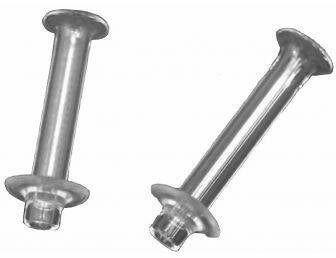Why do I have watering eyes? Watery eyes, or epiphora, are an innocent but very bothersome problem. The reasons why an eye is watery are plentiful and a lot of the causes can be solved. For example, your eye can be overproducing tears so that your lacrimal system cannot drain them fast enough or, as is more often the case, there is an obstruction in your lacrimal system that causes your eye to water excessively. Although it might sound counterintuitive, a lot of watery eyes are caused by a cornea that is too dry or a tear film that does not adequately lubricate the cornea. The cause of the problem has to be evaluated well, as the treatment differs case to case. There are some outpatient test that can be performed that will tell you quite easily what is failing. Once the diagnosis is clear, a treatment plan can be made.

What treatment is best for me? Most watering eye problems can be solved conservatively, with sufficient lubrication and cleaning of the eyelid border a lot of people are helped. However, if the cause of your problem is an obstructed lacrimal duct, Dr. van der Veen can offer you a number of treatments, the most common of which is a dacryocystorhinostomy (DCR) surgery. This is the gold standard for treating lacrimal obstructions in or behind the lacrimal sac. In this surgery a new connection between the lacrimal sac and the nasal mucosa is created. The classical approach is via a small skin incision that afterwards only leaves a small and faint scar on the nose bridge at the site where ones glasses rest on the nose. Dr. van der Veen also specialized in performing endoscopic DCR surgery. With this new technique there is no incision made in the skin and there will therefore also be no scar. The entire surgery is performed through the nose via a specialized operating telescope, called an endoscope, which offers the surgeon a view of the inside of the nose via a screen in the operating room. Dr. van der Veen is one of the few ophthalmologists that performs this surgery alone, without the assistance of an ear nose and throat (ENT-) specialist.
DCR surgery offers a success rate of about 90-95%, in selected cases with co-existing pathology of the eye or nose this percentage can be slightly lower.
In other cases where the obstruction is located more in the beginning of the lacrimal duct the solution can be more simple. A probing of the lacrimal duct with placing of a stent can often solve your problem. Too narrow lacrimal duct openings for instance, can be solved by a small and straight forward intervention that consists of making them larger, either with a special kind of lacrimal plug (picture below, top), or by enlarging them surgically. In the rare case that the obstruction is absolutely impossible to overcome, the lacrimal system can be surpassed entirely by placing a glass tube from the corner of your eye directly through to the nasal cavity, these tubes are called Lester-Jones tubes (picture below, bottom).


What if I suffer from dry eyes? It is not infrequent that a patient presents with watering eyes and is in fact diagnosed to have the eyes too dry. What is meant by that, is that the tear film evaporates too quickly and you have the feeling of having sandy eyes and a constant need to blink in combination with abundant tear production. In fact you could produce so many tears, that your otherwise perfectly functioning lacrimal system, can simple not manage to drain it all. These patients are often endlessly prescribed artificial tears, which can be sufficient for some but be insufficient for others. In those cases it is worth considering visiting an oculoplastic surgeon for a thorough evaluation of your eyelid and lacrimal function.